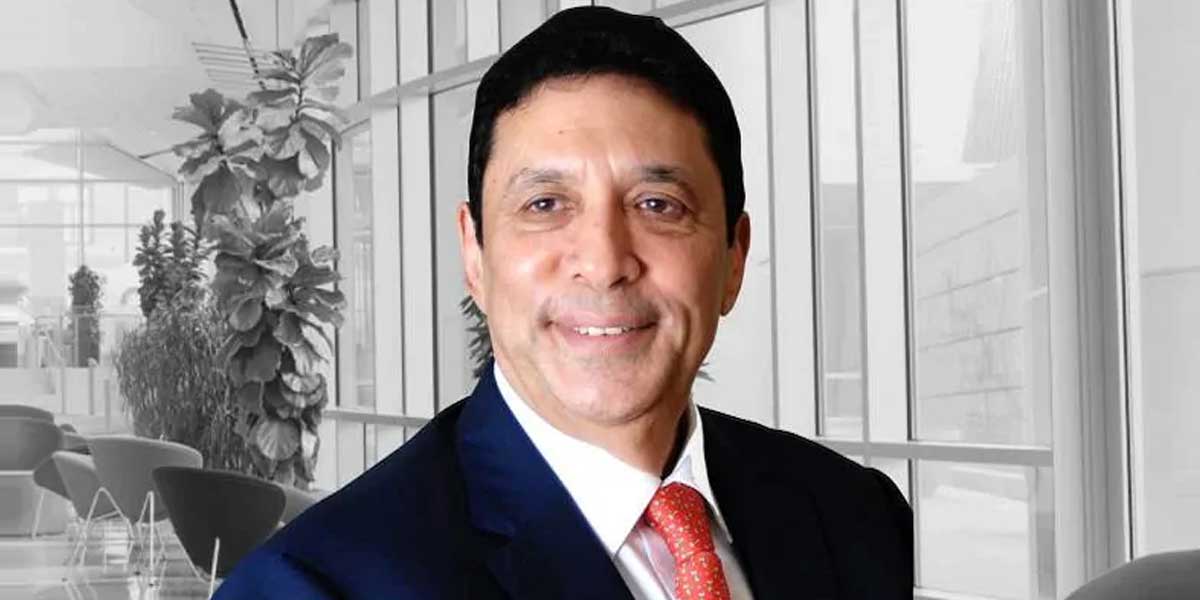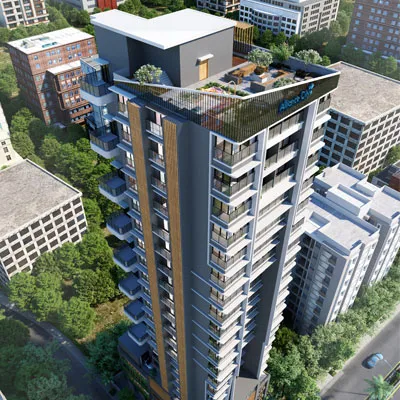HDFC’s Vice Chairman and CEO Keki Mistry played a vital role in a successful transformation of HDFC, India’s premier housing finance company, into India’s leading financial services conglomerate. In an exclusive with CW’s Charu Bahri, he reveals his projection and HDFC’s lending mission. __________
He has worn many hats over his 30 years at HDFC—and excelled in each. From Investor Relations Officer, Chief Financial Officer, Independent Director, Executive Director, Managing Director, Chief Executive Officer and, now, Vice-Chairman and CEO, Keki Mistry has been recognised for contributing to HDFC in every capacity.
As part of the management team, he played a vital role in the successful transformation of HDFC, India’s premier housing finance company, into India’s leading financial services conglomerate, by facilitating the formation of allied companies: HDFC Bank, HDFC Asset Management Company, HDFC Life Insurance Company (erstwhile HDFC Standard Life Insurance Company) and HDFC ERGO General Insurance Company. Going forward, Mistry sees HDFC maintaining its focus on strong governance practices and adhering to its core operating principles—stable spreads through asset-liability management, maintaining quality of assets, achieving operational efficiency, profitability and quality customer service. “There is no substitute for prudent lending,” he emphasises.
Mistry also contributes to the world of finance through his role on various committees, prominently the Corporate Governance Committee constituted by the Securities and Exchange Board of India (SEBI), the Primary Market Advisory Committee of SEBI and the CII National Council on Corporate Governance.
In conversation with CW, Mistry looks back on the year that changed how the world lives, works and banks. He elucidates his vision for the Indian realty sector and explains why, notwithstanding last year’s hiccups, now is the best time ever to buy a home.
Is the impact of the pandemic over? What about HDFC? How has it fared during the pandemic?
Undoubtedly, the worst is behind us. The economy has been picking up gradually for the past four to five months. Things are getting better every subsequent month. People are behaving normally on the streets. Traffic is as high as it used to be. Most businesses are back to normal. There may be a little pressure on industries like airlines, hotels and hospitality, but those are few.
Is there a risk on the horizon? As far as the economy is concerned, I see no risk. The only risk I see—and this is a theoretical risk and I underline, theoretical—is the risk of another wave of the pandemic coming to India. I hear experts saying this is relatively unlikely because of the higher immunity Indians tend to have, and winter being behind us, and so forth. But that is a theoretical risk because we have seen it happen in other countries. Otherwise, as far as the economy is concerned, for all practical purposes the pandemic is over.
I must compliment the Government and the RBI on their handling over the past nine months. In March and April 2020 when the lockdown was in full force, many in the media painted such a negative picture of the situation and were predicting a lasting impact on the Indian economy. But the Government and the RBI have done extremely well. It is to their credit that we are out of the woods.
Do you see any risk from your exposure to borrowers?
Most of our home loans are given to middle-income customers. The average loan size is Rs 28.5 lakh. The home that is financed is the collateral or security for us. Our average loan to property valuation ratio is 70 per cent. All our loans are repaid through monthly instalments that start just after the loan is disbursed, so it is an amortising loan. With every passing month, the outstanding amount of the loan declines.
Affordable housing is a priority area. During the nine months ended December 31, 2020, 34 per cent of home loans approved in volume terms and 17 per cent in value terms were to customers from the economically weaker section (EWS) and low-income groups (LIG).
We anticipate risk and wherever we see the slightest degree of risk for stress, we provide for it. We carried a provision of Rs 12,342 crore as on December 31, 2020, which is much higher than what is required strictly by law.
What is your current appetite for home loans?
Business is continuing. December was a record month. It saw the highest ever levels of receipts, approvals and disbursements. We saw 26 per cent growth in individual loan disbursements during the quarter ended December 31, 2020, compared to the corresponding quarter of the previous year. January was also a good month. From the perspective of a person wanting to buy a house, now is really the best time because interest rates are at an all-time low, property prices have not gone up in the past four to five years; if anything, they have come down. There’s been a timely correction of prices.
In terms of affordability of a house, this is the best time ever. And that, combined with low interest rates and various incentives provided both by the Centre and various state governments, has gone a long way in making housing very affordable and creating so much interest in people in buying a house. In Maharashtra, for example, stamp duty rate was lowered from 5 per cent to 2 per cent provided that the registration happened before December 31, 2020. The stamp duty rate is now 3 per cent provided that the registration happens before March 31, 2021. If you see the numbers of property registrations that have come about, the Government has collected significantly higher than normal revenue despite lowering the stamp duty.
You assigned loans to HDFC Bank amounting to Rs 7,076 crore, compared to Rs 4,258 crore in the corresponding quarter of the previous year. Was this indicative of business picking up in the quarter or any other reasons?
We have had an arrangement with HDFC Bank since 2003. HDFC Bank sources loans for us; we pay them a commission, which is market linked. We do credit and technical appraisals, which is our strength. We decide whether to lend money to a particular customer or not. If we decide to lend money, we make a disbursement, and then the bank has the right to buy back up to 70 per cent of those loans under the agreement. Now it happens that in some quarters they buy more, in some they buy less, but ultimately it averages out. We do not go by quarterly numbers because some quarter numbers are high, some are low. We look at the 12-month average because over that time period, it all averages out.
What more does the Government need to do next to boost real estate? What could boost commercial real estate? What is your projection of yield on residential and commercial in the next three years?
Frankly, I think the Government has done a lot for the real-estate sector. There are fiscal benefits. The interest you pay on a housing loan is tax-deductible. The principal repayment is tax-deductible. Further, in the recent Union Budget, the Government has recognised this inherent demand and extended the additional deduction of Rs 150,000 on interest paid on loans taken till March 31, 2022, for the purchase of an affordable house. There is the credit-linked subsidy scheme that more than a million people have benefited from. We are the largest contributors to that scheme. So, the Government has done a lot to encourage housing.
If you were to ask me what more could be done, if the GST rate on under-construction housing were lowered, it would make housing more affordable.
Commercial real estate is doing well. In April-May when the pandemic broke out, a lot of analysts started saying that everyone would start working from home and no one would look at commercial real estate. But we have got data to suggest that there is very large demand for commercial real estate, and not just what is sold now or rented out. I am given to understand that a lot of overseas companies are looking at outsourcing to India, so I think the future of commercial real estate is very strong.
Residential rental yield has historically always been very very low and continues to be low. Commercial rental yield will move with market rates. Commercial yields have always been higher than residential yields. These yields will move in line with interest rates. Most properties leased out carry a clause that says that this is the rent for ‘x’ number of years, and then it is stepped up.
When the moratorium was announced, you had something like 16.6 per cent of individual loans in value terms who opted for a moratorium. Isn’t that a fairly low percentage? What do you attribute this to?
About 17 per cent of our loan book was under moratorium. The reason is that over 70 per cent of our customers are salaried employees and most of them are working in good companies or government organisations. Therefore, they would not have seen job losses or their salary cuts would have been minimal. So, their need to take a moratorium would have been lower.
Also, lots of people thought of taking a moratorium only because it was an available facility and were sceptical of what would happen during the lockdown during the next three to four months and whether their jobs would continue. Essentially, they took moratoriums in anticipation of some difficulty or the other, which never happened. And if you really see, contrary to projections by analysts, job losses were not so significant for middle-income households.
What are your views on REITs? Do you expect them to pick up?
REITs are a very good way for the common man to participate in the commercial real-estate market. Most people cannot afford to buy commercial real estate and get a rental yield from it. A REIT is an attractive form of investment and is relatively safe. You get a regular rental yield and you benefit if the property appreciates in value.
At the end of the day, someone who has financed real estate would like to list those properties and raise funds, and use those funds to buy more real estate. If you look at Singapore, for example, REIT is an extremely popular product that most individuals subscribe to. Anyone who is looking at some form of investment and rental yield or even someone with a lower to middle income could invest in a REIT.
Given Blackstone and Brookfield have invested hugely in Indian real estate, how do you see the real-estate segment evolving?
The recent REIT was the Brookfield REIT. They brought capital into India, bought commercial properties and rented them out, and now they have put that commercial property into a REIT structure. So, whoever is a subscriber to the REIT will get a pro-rata share of the rent from the property.
Do you see any impact of the REIT on the quantity or quality of commercial real estate constructed?
Quantity is a function of demand and demand will continue to exist. If you have reputed overseas investors coming in, they will obviously insist on top quality construction. So they will impact the quality of commercial real estate.
How is PropTech changing the way the real-estate business is conducted and how do you see the role of digital in real estate?
This pandemic has taught us that face-to-face contact is not always possible with salespeople and so you have to move to the digital mode. A very substantial number (81 per cent) of our new customers in the last quarter were onboarded digitally.
What backend preparation did you need to do to drive four-fifths of your business digitally?
First, we needed to ensure that every single individual had a laptop or some data device and then we had to adapt very quickly to working from home. However, the legal system in India requires a physical signature prior to a loan disbursement. So, while you can do digital applications you still need one physical interaction.
Do you think going digital takes away from the pre-loan disbursement customer verification process?
No, it doesn’t.
Any other thoughts on digitisation?
The digitisation of land records would help.
Your parting thoughts?
I truly mean it—this is the best time to buy a property in India. Be it affordable, the middle-income segment or upper-income housing. The demand is coming pan India.





















